| [1] |
周晓静. 东海陆架细颗粒沉积物组成分布特征及其物源指示[D]. 青岛:中国科学院海洋研究所, 2009:27-113[Zhou Xiaojing. The source and composition of fine-grained sediment deposited on the East China Sea Shelf[D]. Qingdao: Institute of Oceanology, Chinese Academy of Sciences, 2009: 27-113]
|
|
| [2] |
黄亮, 张国森, 吴莹, 等. 东海内陆架表层沉积物中黑碳的分布及来源[J]. 地球与环境, 2012, 40(1):63-69[Huang Liang, Zhang Guosen, Wu Ying, et al. Distribution and source of black carbon in the surface sediment of the inner continental of the East China Sea[J]. Earth and Environment, 2012, 40(1): 63-69]
|
|
| [3] |
于培松, 薛斌, 潘建明, 等. 长江口和东海海域沉积物粒径对有机质分布的影响[J]. 海洋学研究, 2011, 29(3):202-208[Yu Peisong, Xue Bin, Pan Jianming, et al. Impact of sediment grain size on the distribution of organic matter in Changjiang River Estuary and East China Sea[J]. Journal of Marine Sciences, 2011, 29(3): 202-208]
|
|
| [4] |
王华新, 线微微. 长江口表层沉积物有机碳分布及其影响因素[J]. 海洋科学, 2011, 35(5):24-31[Wang Huaxin, Xian Weiwei. Distribution of the total organic carbon of surface sediment and its influence factors in the Yangtze River Estuary[J]. Marine Sciences, 2011, 35(5): 24-31]
|
|
| [5] |
章伟艳, 金海燕, 张富元, 等. 长江口—杭州湾及其邻近海域不同粒级沉积物有机碳分布特征[J]. 地球科学进展, 2009, 24(11):1202-1209[Zhang Weiyan, Jin Haiyan, Zhang Fuyuan, et al. Organic carbon distribution in the Yangtze River Estuary-Hangzhou Bay and its adjacent sea area[J]. Advances in Earth Science, 2009, 24(11): 1202-1209]
|
|
| [6] |
Lu X X, Song J M, Yuan H M, et al. Grain-size related distribution of nitrogen in the southern Yellow Sea surface sediments[J]. Chinese Journal of Oceanology and Limnology, 2005, 23(3): 306-316
|
|
| [7] |
何会军, 于志刚, 姚庆祯, 等. 长江口及毗邻海区沉积物中磷的分布特征[J]. 海洋学报, 2009, 31(5):19-30[He Huijun, Yu Zhigang, Yao Qingzhen, et al. Distribution of phosphorus in sediments from the Changjiang Estuary and its adjacent sea[J]. Acta Oceanologica Sinica, 2009, 31(5): 19-30]
|
|
| [8] |
杨世纶. 长江口沉积物粒度参数的统计规律及其沉积动力学解释[J]. 泥沙研究, 1994(3):23-31[Yang Shilun. Statistic features for grain-size parameters of the Yangtze River Estuary and their hydrodynamic explanation[J]. Journal of Sediment Research, 1994(3): 23-31]
|
|
| [9] |
刘红, 何青, 王元叶, 等. 长江口表层沉积物粒度时空分布特征[J]. 沉积学报, 2007, 25(3):445-455[Liu Hong, He Qing, Wang Yuanye, et al. Temporal and spatial characteristics of surface sediment grain-size distribution in Changjiang Estuary[J]. Acta Sedimentologica Sinica, 2007, 25(3): 445-455]
|
|
| [10] |
陈沈良, 严肃庄, 李玉中. 长江口及其邻近海域表层沉积物分布特征[J]. 长江流域资源与环境, 2009, 18(2):152-156[Chen Shenliang, Yan Suzhuang, Li Yuzhong. Characteristics of surface sediment distribution in the Yangtze Estuary and its adjacent waters[J]. Resources and Environment in the Yangtze Basin, 2009, 18(2): 152-156]
|
|
| [11] |
董爱国, 翟世奎, ZABEL Matthias, 等. 长江口及邻近海域表层沉积物中重金属元素含量分布及其影响因素[J]. 海洋学报, 2009, 31(6):54-68[Dong Aiguo, Zhai Shikui, ZABEL Matthias, et al. The distribution of heavy metal contents in surface sediments of the Changjiang Estuary in/china and surrounding coastal areas[J]. Acta Oceanologica Sinica, 2009, 31(6): 54-68]
|
|
| [12] |
董爱国. 长江口及邻近海域沉积物重金属元素地球化学特征及其人类活动的响应[D]. 青岛:中国海洋大学, 2008:28-35[Dong Aiguo. Geochemical characters of heavy metals and its responds to human activity in sediments of Yangtze estuary and surrounding coastal area, China[D]. Qingdao: Ocean University of China, 2008: 28-35]
|
|
| [13] |
张晓东, 翟世奎, 许淑梅. 长江口外近海表层沉积物粒度的级配特征及其意义[J]. 中国海洋大学学报, 2007, 37(2):328-334[Zhang Xiaodong, Zhai Shikui, Xu Shumei. The grain size fractions distribution characteristics and their significance of the surface sediment s on the adjacent sea area off the Changjiang Estuary[J]. Periodical of Ocean University of China, 2007, 37(2): 328-334]
|
|
| [14] |
田姗姗, 张富元, 阎丽妮, 等. 东海西南陆架表层沉积物粒度分布特征[J]. 海洋地质与第四纪地质, 2009, 29(5):13-20[Tian Shanshan, Zhang Fuyuan, Yan Lini, et al. Distribution characteristics of granularities of surface sediments in the southwestern shelf of the East China Sea[J]. Marine Geology & Quaternary Geology, 2009, 29(5): 13-20]
|
|
| [15] |
庄克琳. 长江水下三角洲的沉积特征[D]. 青岛:中国海洋大学, 2005:57-66[Zhuang Kelin. Sedimentation features in the subaqueous Yangtze Delta[D]. Qingdao: Ocean University of China, 2005: 57-66]
|
|
| [16] |
庄克琳, 毕世普, 刘振夏, 等. 长江水下三角洲的动力沉积[J]. 海洋地质与第四纪地质, 2005, 25(2):1-9[Zhuang Kelin, Bi Shipu, Liu Zhenxia, et al. Dynamic sedimentation in the subaqueous Yangtze (Changjiang) Delta[J]. Marine Geology & Quaternary Geology, 2005, 25(2): 1-9]
|
|
| [17] |
秦蕴珊, 郑铁民. 东海大陆架沉积物分布特征的初步探讨[C]//中国科学院海洋研究所海洋地质研究室. 黄东海地质. 北京:科学出版社, 1982:39-51[Qin Yunshan, Zheng Tiemin. A study of distribution pattern of sediment in the continental shelf of the East China Sea[C]//Department of Marine Geology, Institute of Oceanology, Academia Sinica. The Geology of the Yellow Sea and the East China Sea. Beijing: Science Press, 1982: 39-51]
|
|
| [18] |
罗向欣. 长江中下游、河口及邻近海域底床沉积物粒径的时空变化—自然机制和人类活动的影响[D]. 上海:华东师范大学, 2012:25-80[Luo Xiangxin. The spatial and temporal variation in sediment grain size in the middle and lower Yangtze River, Yangtze Estuary and the offshore area adjacent to Yangtze Estuary-the impact of natural factors and human activities[D]. Shanghai: East China Normal University, 2012: 25-80]
|
|
| [19] |
罗向欣, 杨世伦, 张文祥, 等. 近期长江口—杭州湾邻近海域沉积物粒径的时空变化及其影响因素[J]. 沉积学报, 2012, 30(1):137-147[Luo Xiangxin, Yang Shilun, Zhang Wenxiang, et al. Recent spatial pattern and temporal variation in sediment grain size in the inshore area adjacent to the Yangtze Estuary and Hangzhou Bay[J]. Acta Sedimentologica Sinica, 2012, 30(1): 137-147]
|
|
| [20] |
Luo X X, Yang S L, Zhang J. The impact of the Three Gorges Dam on the downstream distribution and texture of sediments along the middle and lower Yangtze River (Changjiang) and its estuary and subsequent sediment dispersal in the East China Sea[J]. Geomorphology, 2012, 179: 126-140
|
|
| [21] |
李维显, 荣人德, 冯诗齐. 长江口海区表层沉积物及其有机质分布特征[J]. 上海地质, 1987(23):40-53[Li Weixian, Rong Rende, Feng Shiqi. Yangtze Delta sea sediments and organic matter distribution[J]. Shanghai Geology, 1987(23): 40-53]
|
|
| [22] |
Chen Zhongyuan, Song Baoping, Wang Zhanghua, et al. Late Quaternary evolution of the subaqueous Yangtze Delta, China: sedimentation, stratigraphy, palynology, and deformation[J]. Marine Geology, 2000, 162(2): 423-441
|
|
| [23] |
Youn Jeungsu, Yang Shouye, PAPK Yong Ahn. Clay minerals and geochemistry of the bottom sediments in the northwestern East China Sea[J]. Chinese Journal of Oceanology and Limnology, 2007, 25(3): 235-246
|
|
| [24] |
窦衍光. 长江口邻近海域沉积物粒度和元素地球化学特征及其对沉积环境的指示[D]. 青岛:国家海洋局第一海洋研究所, 2007:15-34[Dou Yanguang. Characteristics of sediment granularity, element geochemistry and their significance for identifying sedimentary environment in the contiguous sea areas of Changjiang River Estuary[D]. Qingdao: The First Institute of Oceanography, Sea, 2007: 15-34]
|
|
| [25] |
黄龙, 张志珣, 杨慧良. 东海陆架北部表层有用重砂资源形成条件及成矿远景[J]. 海洋地质前沿, 2012, 28(7):10-16[Huang Long, Zhang Zhixun, Yang Huiliang. Formation and prospect of valuable heavy minerals in surface sediments in the northern East China Sea shelf[J]. Marine Geology Frontiers, 2012, 28(7): 10-16]
|
|
| [26] |
史晓宁. 东海陆架沉积物中硫、铁形态分析及其早期成岩作用[D]. 青岛:中国海洋大学, 2012[Shi Xiaoning. Speciation and early digenesis study of sulfur and iron in sediments of the East China Sea continental shelf[D]. Qingdao: Ocean University of China, 2012]
|
|
| [27] |
黄德坤. 基于核素示踪的长江口、东海和海南东部近海泥沙的沉降过程[D]. 上海:华东师范大学博士论文, 2012:50-78[Huang Dekun. Applications of radionuclides to trace sources, transport pathways and depositions of sediments in the Changjiang Estuary, East China Sea and coastal environment of eastern Hainan Island[D]. Shanghai: East China Normal University, 2012: 50-78]
|
|
| [28] |
Yang S L, Zhao Q Y, Belkin I M. Temporal variation in the sediment load of the Yangtze river and the influences of human activities[J]. Journal of Hydrology, 2000, 263(1/2/3/4): 56-71
|
|
| [29] |
Yang S L, Zhang J, Zhu J, et al. Impact of dams on Yangtze River sediment supply to the sea and delta intertidal wetland response[J]. Journal of Geophysical Research: Earth Surface, 2005, 110(F3): 1-12
|
|
| [30] |
Yang S L, Zhang J, Dai S B, et al. Effect of deposition and erosion within the main river channel and large lakes on sediment delivery to the estuary of the Yangtze River[J]. Journal of Geophysical Research, 2007, 112(F02005): 1-13
|
|
| [31] |
Yang Z, Wang H, Saito Y, et al. Dam impacts on the Changjiang (Yangtze) River sediment load to the sea: the past 55 years and after the Three Gorges Dam[J]. Water Resources Research, 2006, 42(4): 1-10
|
|
| [32] |
Dai S B, Lu X X, Yang S L, et al. A preliminary estimate of human and natural contributions to the decline in sediment flux from the Yangtze River to the East China Sea[J]. Quaternary International, 2008, 186(1): 43-54
|
|
| [33] |
Dai S B, Yang S L, Li M. The sharp decrease in suspended sediment supply from China's rivers to the sea: anthropogenic and natural causes[J]. Hydrological Sciences Journal, 2009, 54(1): 135-146
|
|
| [34] |
张珍, 杨世伦, 李鹏. 三峡水库一、二期蓄水对下游悬沙通量影响的计算[J]. 地理学报, 2010, 65(5):623-631[Zhang Zhen, Yang Shilun, Li Peng. Quantifying the influence of water impoundment phases I and II of the Three Gorges Reservoir on downstream suspended sediment flux[J]. Acta Geographica Sinica, 2010, 65(5): 623-631]
|
|
| [35] |
Yang S L, Milliman J D, Li P, et al. 50, 000 dams later: Erosion of the Yangtze River and its delta[J]. Global and Planetary Change, 2011, 75(1/2), 14-20
|
|
| [36] |
何坚, 潘少明, 沙红良, 等. 长江大通站床沙粒径变化及其对流域工程建设的响应分析[J]. 南京大学学报:自然科学版, 2010, 46(3):349-357[He Jian, Pan Shaoming, Sha Hongliang, et al. The analysis on the grain size variation of bed materials at Datong Hydrological Station and its response to the project constructions along the Yangtze River[J]. Journal of Nanjing University: Natural Sciences, 2010, 46(3): 349-357]
|
|
| [37] |
Wang Zhangqiao, Chen Zhongyuan, Li Maotian, et al. Variations in downstream grain-sizes to interpret sediment transport in the middle-lower Yangtze River, China: A pre-study of Three-Gorges Dam[J]. Geomorphology, 2009, 113(3/4): 217-229
|
|
| [38] |
Guo Leicheng, He Qing. Freshwater flocculation of suspended sediments in the Yangtze River, China[J]. Ocean Dynamics, 2012, 61(2): 371-386
|
|
| [39] |
Flemming B W. A revised textural classification of gravel-free muddy sediments on the basis of ternary diagrams[J]. Continental Shelf Research, 2000, 20(10): 1125-1137
|
|
| [40] |
Van Ledden M. Sand-mud segregation in estuaries and tidal basins[D]. Delft: Delft University of Technology, 2003: 17-35
|
|
| [41] |
杨云平, 李义天, 孙昭华, 等. 长江口最大浑浊带悬沙浓度变化趋势及成因[J]. 地理学报, 2013, 68(9):1240-1250[Yang Yunping, Li Yitian, Sun Zhaohua, et al. Suspended sediment load in the turbidity maximum zone at the Yangtze River Estuary: Its trend and causes[J]. Acta Geographica Sinica, 2013, 68(9): 1240-1250]
|
|
| [42] |
Yang Yunping, Li Yitian, Sun Zhaohua, et al. Suspended sediment load in the turbidity maximum zone at the Yangtze River Estuary: The trends and causes[J]. Journal of Geographical Sciences, 2014, 24(1): 129-142
|
|
| [43] |
杨云平, 李义天, 韩剑桥, 等. 长江口潮区和潮流界面变化及对工程响应[J]. 泥沙研究, 2012(6):46-51[Yang Yunping, Li Yitian, Han Jianqiao, et al. Variation of tide limit and tidal current limit in Yangtze Estuary and its impact on projects[J]. Journal of Sediment Research, 2012(6): 46-51]
|
|
| [44] |
中国国家海洋局. 2011年中国海平面公报[R]. 2011[State Oceanic Administration People’s Republic of China. Journal of China Ocean Level Information, 2011[R]. 2011]
|
|
| [45] |
刘红, 何青, Gert Jan Weltje, 等. 长江入海泥沙的交换和输移过程-兼论泥质区的“泥库”效应[J]. 地理学报, 2011, 66(3):291-304[Liu Hong, He Qing, Gert Jan Weltje, et al. Sediment exchange and transport processes in the Yangtze River Estuary: Concurrent discussion on the effects of sediment sink in the muddy area[J]. Acta Geographica Sinica, 2011, 66(3): 291-304]
|
|
| [46] |
杨作升, 陈晓辉. 百年来长江口泥质区高分辨率沉积粒度变化及影响因素探讨[J]. 沉积学报, 2007, 27(5):690-699[Yang Zuosheng, Chen Xiaohui. Centurial high-resolution records of sediment grain-size variation in the mud area off the Changjiang (Yangtze River) Estuary and its influential factors[J]. Quaternary Sciences, 2007, 27(5): 690-699]
|
|
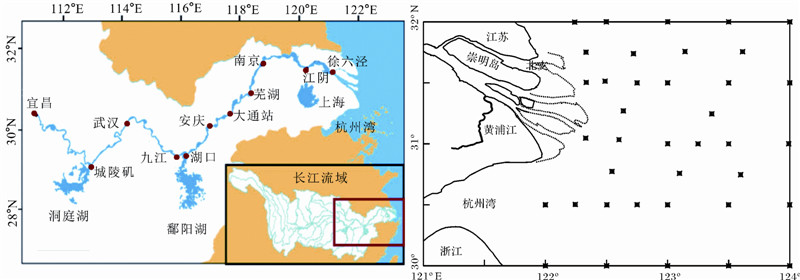

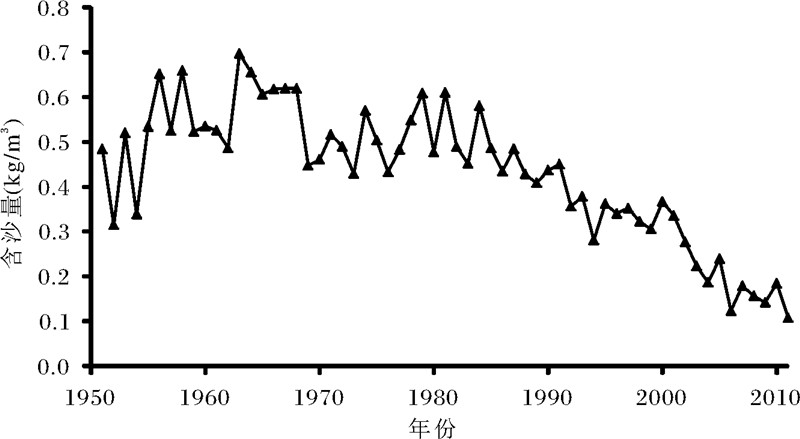

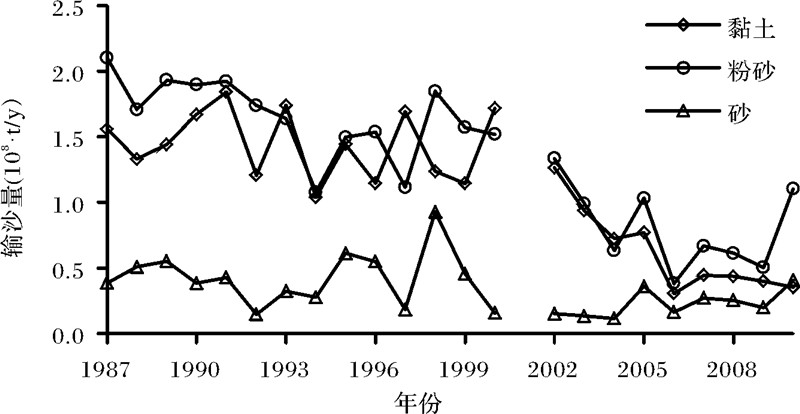

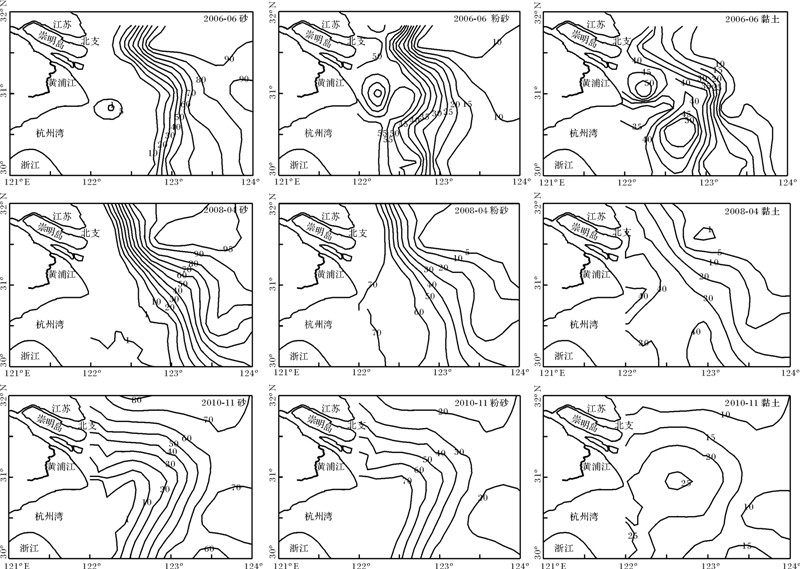



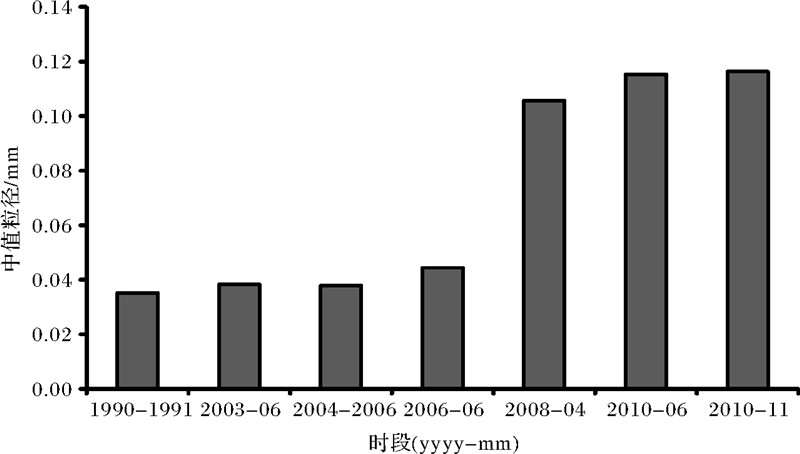
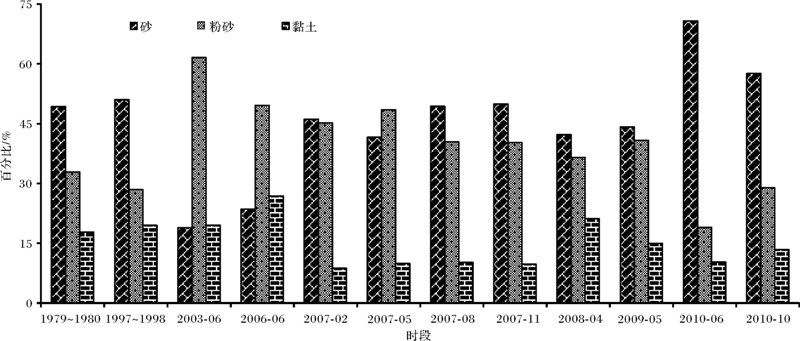
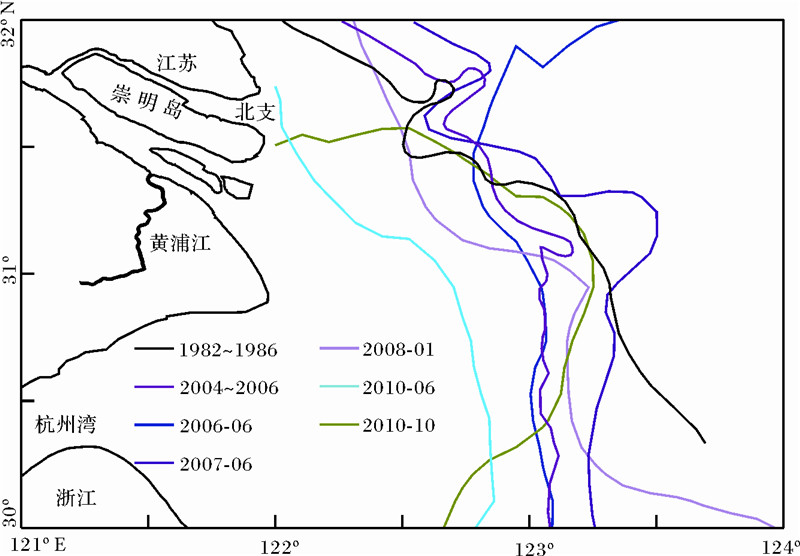

 2014, Vol. 32
2014, Vol. 32

